Take a fascinating dive into the world of bees and their unexpected attraction to the salvia plant in your garden.
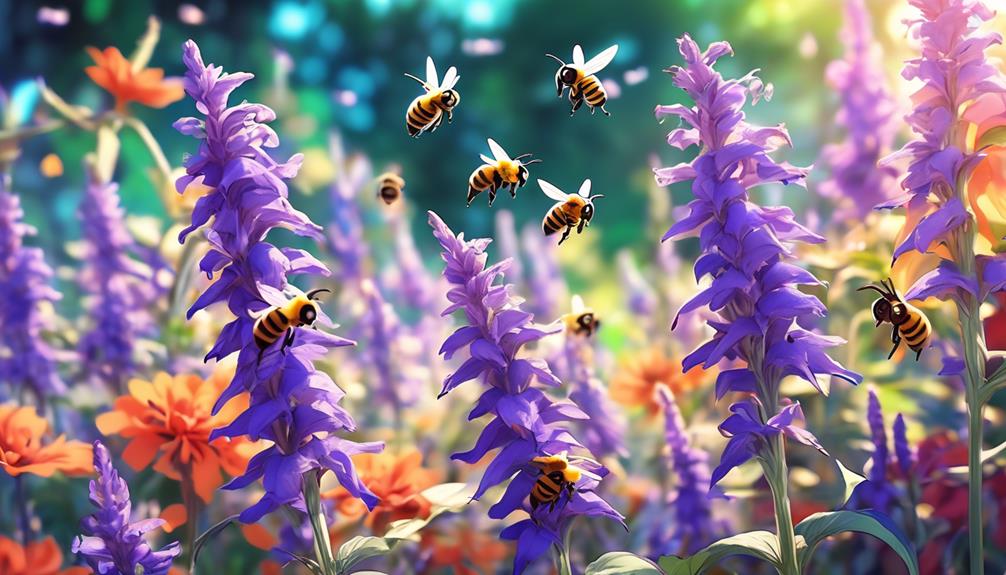
Do Bees Like Salvia?
Peering into the world of bees is like unlocking a secret garden, full of unexpected attractions.
You've probably noticed bees buzzing around your garden, but have you ever stopped to consider which plants they're particularly drawn to?
Let's focus on one specific plant – the salvia. It's a common sight in many gardens, but does it hold a special allure for our buzzing friends?
The answer might surprise you, and it could fundamentally change the way you approach your gardening.
So, are you ready to explore this uncharted territory?
Key Takeaways
- Bees are attracted to plants with high nectar content, making salvia an attractive choice for them.
- The vibrant colors of salvia flowers, especially blue and purple, are highly visible to bees.
- Salvia's tubular flowers provide a landing platform for bees to collect pollen and nectar.
- Bees play a crucial role in salvia's reproduction by facilitating cross-pollination and seed production.
Understanding Bees' Preferences
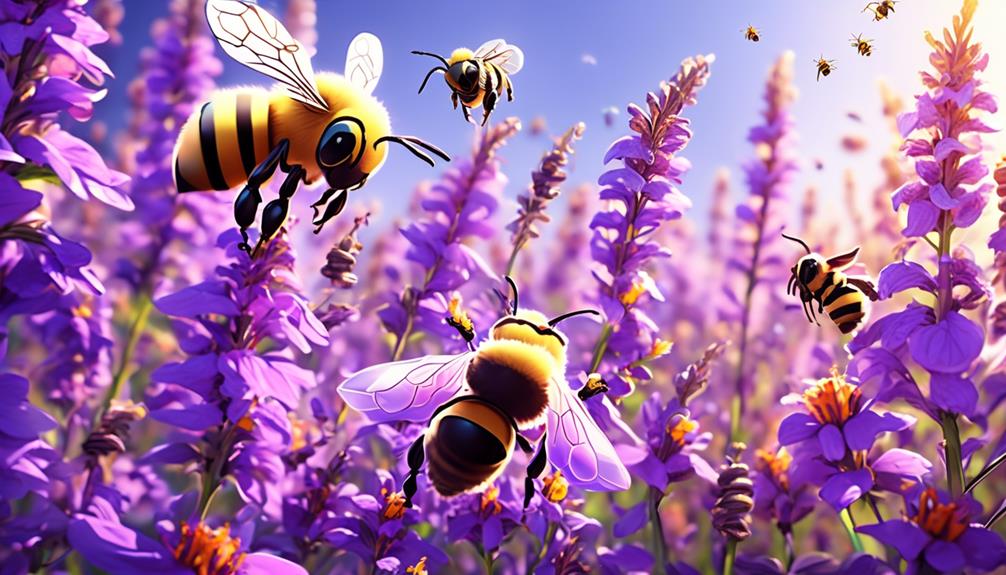
To fully comprehend why bees might favor salvia, it's crucial to delve into their preferences and the factors that influence their attraction to certain plants. Bees are primarily attracted to plants that offer a high nectar content, as this is their main food source. But, it's not just the quantity of nectar that matters, the quality is equally important. Bees tend to favor nectar rich in sucrose, a type of sugar.
Salvia, often referred to as sage, is known for its high nectar production. It's also a plant that blooms for a long duration, providing a consistent source of food for bees. But there's more to this plant-bee relationship. Bees are also attracted to the colors and scent of flowers. Salvia's vibrant colors, particularly blues and purples, are highly appealing to bees' color vision. Furthermore, the plant's potent aroma, which humans find pleasant, is also a powerful attractant for bees.
Salvia: A Brief Overview
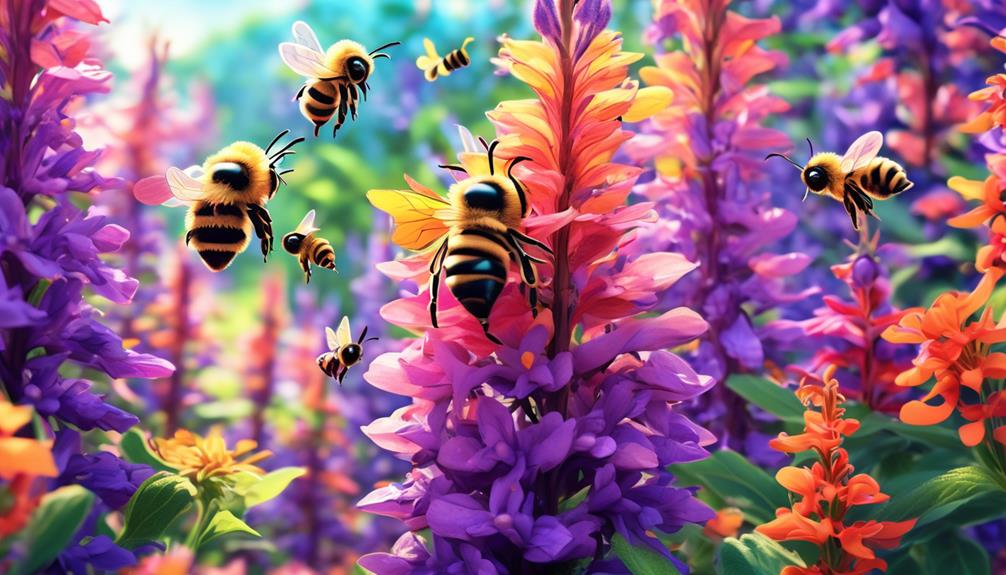
Having explored the reasons behind bees' attraction to salvia, let's now gain a deeper understanding of salvia itself, a plant as interesting as its pollinators. Salvia, commonly known as sage, is a vast genus within the mint family, encompassing nearly 1,000 species. You'll find that these species span a wide variety of growth habits, flower shapes and colors, and native habitats.
Common Name | Scientific Name | Native Habitat |
|---|---|---|
Garden Sage | Salvia officinalis | Mediterranean |
Hummingbird Sage | Salvia spathacea | California |
Meadow Sage | Salvia pratensis | Europe, Asia |
Pineapple Sage | Salvia elegans | Mexico, Guatemala |
Each species of salvia has unique characteristics but generally, they're known for their vibrant flowers and aromatic foliage. These plants are drought-tolerant, attracting not only bees, but also hummingbirds and butterflies. They're loved by gardeners for their low maintenance and high impact. Unsurprisingly, these features also make salvia highly attractive to bees.
Gaining a deeper understanding of salvia allows you to appreciate why bees are so drawn to it. So, the next time you spot a bee hovering around a salvia plant, you'll understand exactly why.
The Attraction Between Bees and Salvia
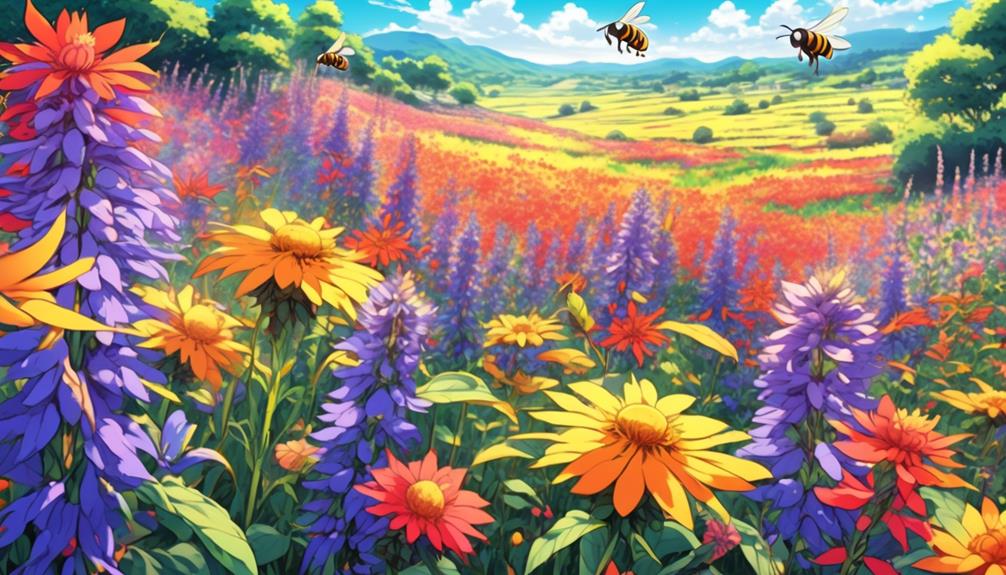
Often, you'll find bees buzzing enthusiastically around salvia plants, drawn by the plant's vibrant flowers and aromatic foliage. This isn't a coincidence. Bees and salvia share a mutualistic relationship; both benefit from this interaction.
Salvia, also known as sage, produces nectar in abundance, a high-energy food source that bees can't resist. It's not just the nectar that attracts them. The flowers' striking colors, predominantly blue and purple, are highly visible to bees. Salvia's tubular flowers also provide a perfect landing platform for bees, making it easier for them to collect pollen and nectar.
Bees, on the other hand, play a crucial role in salvia's reproduction. As they move from flower to flower, they inadvertently transfer pollen, facilitating cross-pollination. This helps the salvia plants to produce seeds and propagate.
In essence, you could say that bees and salvia plants have a give-and-take relationship. It's a fascinating interaction, showcasing the beauty of nature's interconnectedness. So, next time you see bees hovering around your salvia plants, remember, they're not just feasting on nectar, they're also helping the plants thrive.
Impact on Ecosystem and Pollination
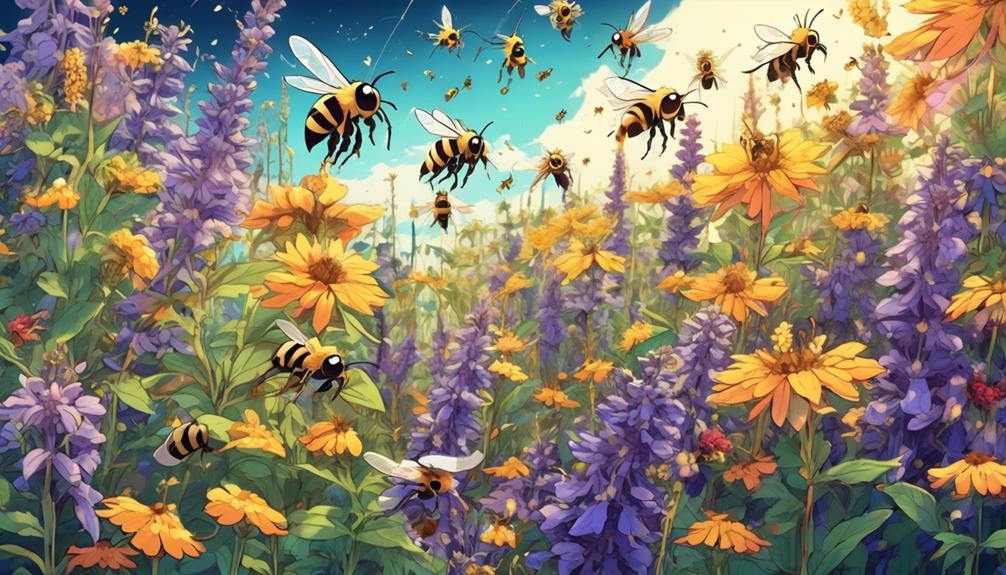
In your garden, the dance between bees and salvia has far-reaching effects on the ecosystem and the process of pollination. The mutual relationship between these pollinators and plants enhances biodiversity by promoting the growth and proliferation of various plant species.
When bees collect nectar from salvia blossoms, they inadvertently collect and transfer pollen grains from the male anthers of one flower to the female stigma of another. This cross-pollination fosters genetic diversity, strengthening the plant population's resilience to diseases and environmental changes.
Moreover, the pollination service provided by bees is crucial in maintaining your garden's aesthetic appeal. It ensures the continuous blooming of flowers and production of fruits and seeds.
It's not just your garden that benefits, though. It's estimated that about one-third of our global food supply depends on bee pollination, underscoring the paramount importance of their relationship with plants like salvia.
Maximizing Your Garden for Bees
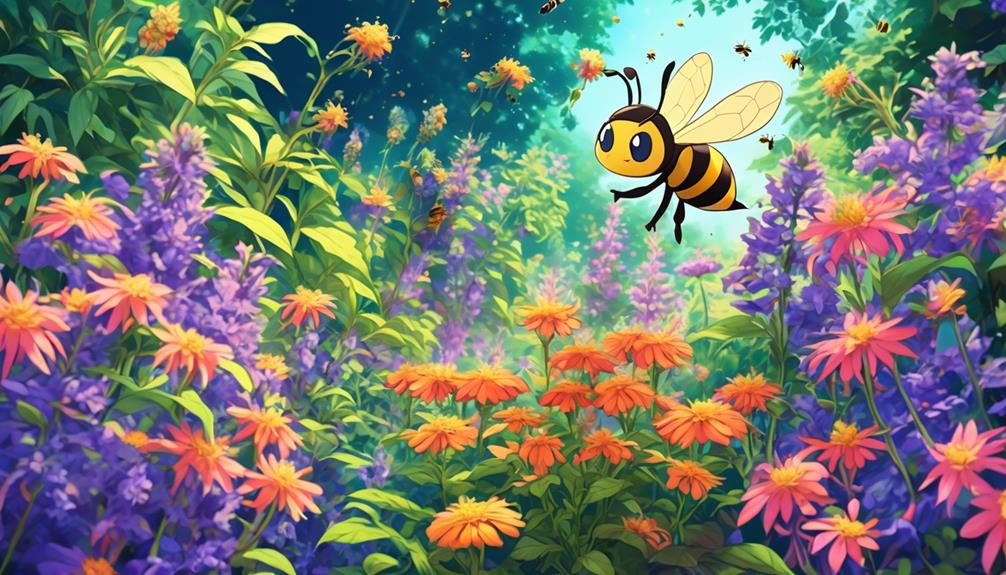
To make your garden a haven for bees, it's crucial to understand their preferences and adapt your garden accordingly. Bees are particular about the plants they visit, and if you're asking, 'Do bees like Salvia?' the answer is a resounding yes. These insects are drawn to Salvia's vibrant flowers and the abundant nectar they provide.
Maximizing your garden for bees involves more than just planting Salvia. You should aim for a variety of plants that bloom at different times of the year. This ensures that bees have a steady supply of nectar throughout the seasons. Consider plants like Lavender, Coneflowers, and Sunflowers – all rich in nectar and popular with bees.
Another point to consider is the layout of your garden. Bees prefer gardens where similar plants are grouped together. It's easier for them to collect nectar this way.
Also, avoid using pesticides as these can harm bees.
Frequently Asked Questions
What Other Plants Besides Salvia Are Attractive to Bees?
You're curious about which plants, in addition to salvia, can attract bees. There's a wide variety! Bees are particularly drawn to plants like lavender, cosmos, and sunflowers. They also love herbs such as rosemary and thyme.
Blooms with bright colors and sweet aromas are a big hit with bees. Remember, creating a diverse garden with a range of flowering periods will keep these crucial pollinators buzzing around your garden all year round.
Are There Any Specific Species of Bees That Are More Attracted to Salvia?
Yes, certain species of bees show a stronger attraction to salvia. Honeybees and bumblebees are particularly fond of these plants. Their tube-shaped flowers are perfect for the long tongues of these bee species.
But remember, it's not just about the species. The bee's attraction can also depend on the specific type of salvia, its color, and the time of year.
Can Salvia Impact the Health and Lifespan of Bees?
Yes, salvia can impact a bee's health and lifespan. It's rich in nectar, which bees need for energy, and pollen for protein. This nutritious food source can enhance their vitality and longevity.
Also, since salvia blooms for a long time, it provides a consistent food supply. However, it's worth noting that excessive or sole reliance on one plant type can limit the diversity of their diet, which isn't ideal for their overall health.
What Are the Potential Negative Impacts of Bees Not Liking Salvia on the Ecosystem?
If bees don't favor a certain plant species, it can upset the balance of an ecosystem.
Bees play a crucial role in pollination, and if they're not interacting with a plant like salvia, it could face reduced propagation.
This could alter the plant's abundance and diversity, potentially impacting other species that rely on it.
Ultimately, any changes in bee behavior can ripple through the ecosystem, demonstrating their pivotal role in maintaining biodiversity.
Do Bees Have Any Impact on the Growth and Propagation of Salvia Plants?
Yes, bees significantly impact the growth and propagation of salvia plants. They're vital pollinators, facilitating the transfer of pollen from the male parts of a flower to the female parts. This leads to the production of seeds, which helps the plant spread and grow.
Without bees, the rate of successful pollination could potentially decrease, affecting the overall growth and spread of salvia plants in the environment.
Conclusion
So, do bees like salvia? You bet they do! These little critters are remarkably drawn to the nectar-rich blossoms of salvia. They play a crucial role in pollination, ensuring a thriving ecosystem.
By incorporating salvia in your garden, you're not just beautifying your space but also giving a helping hand to our buzzing friends. Remember, a garden filled with bees is a sign of a healthy environment.



